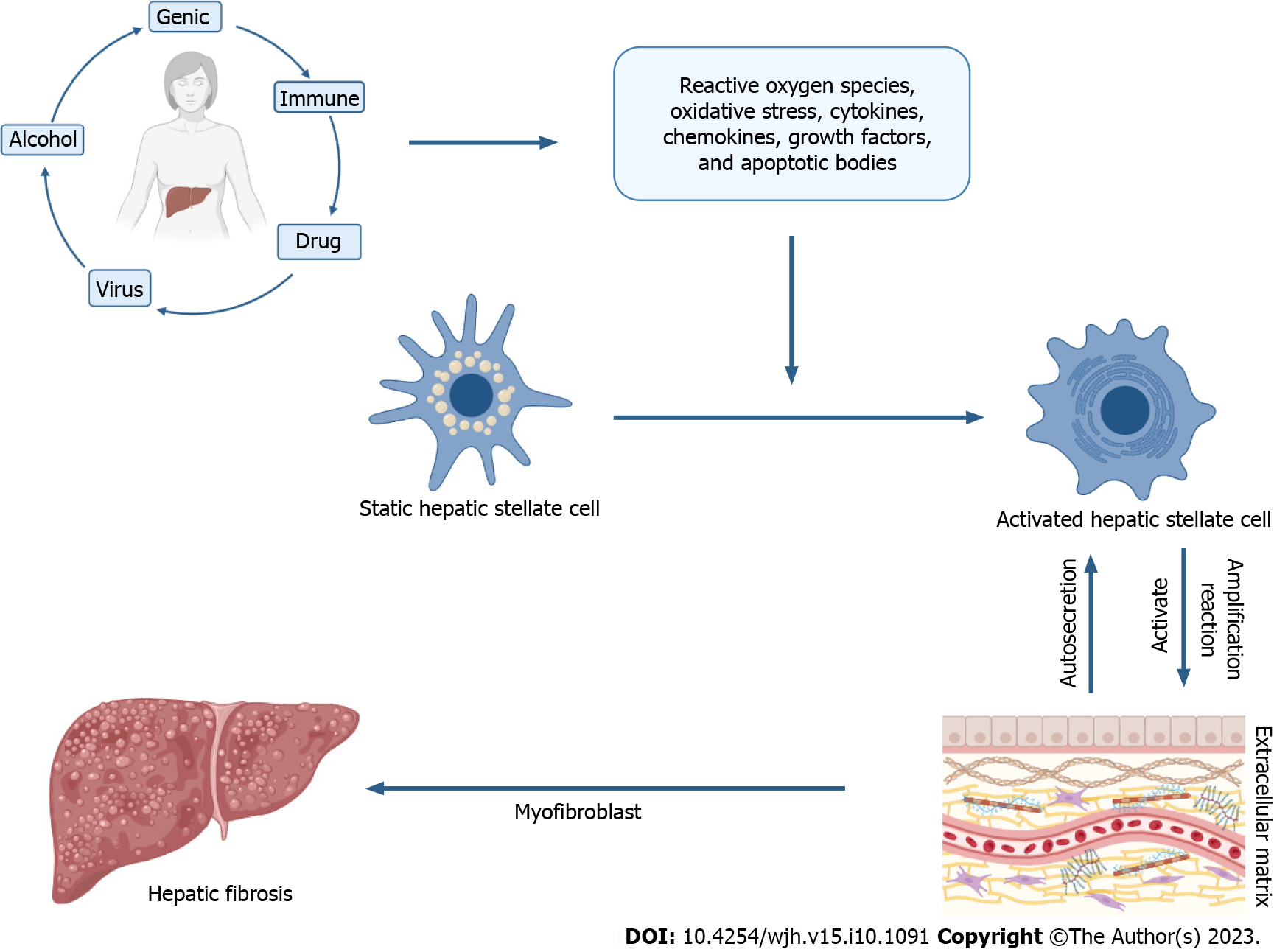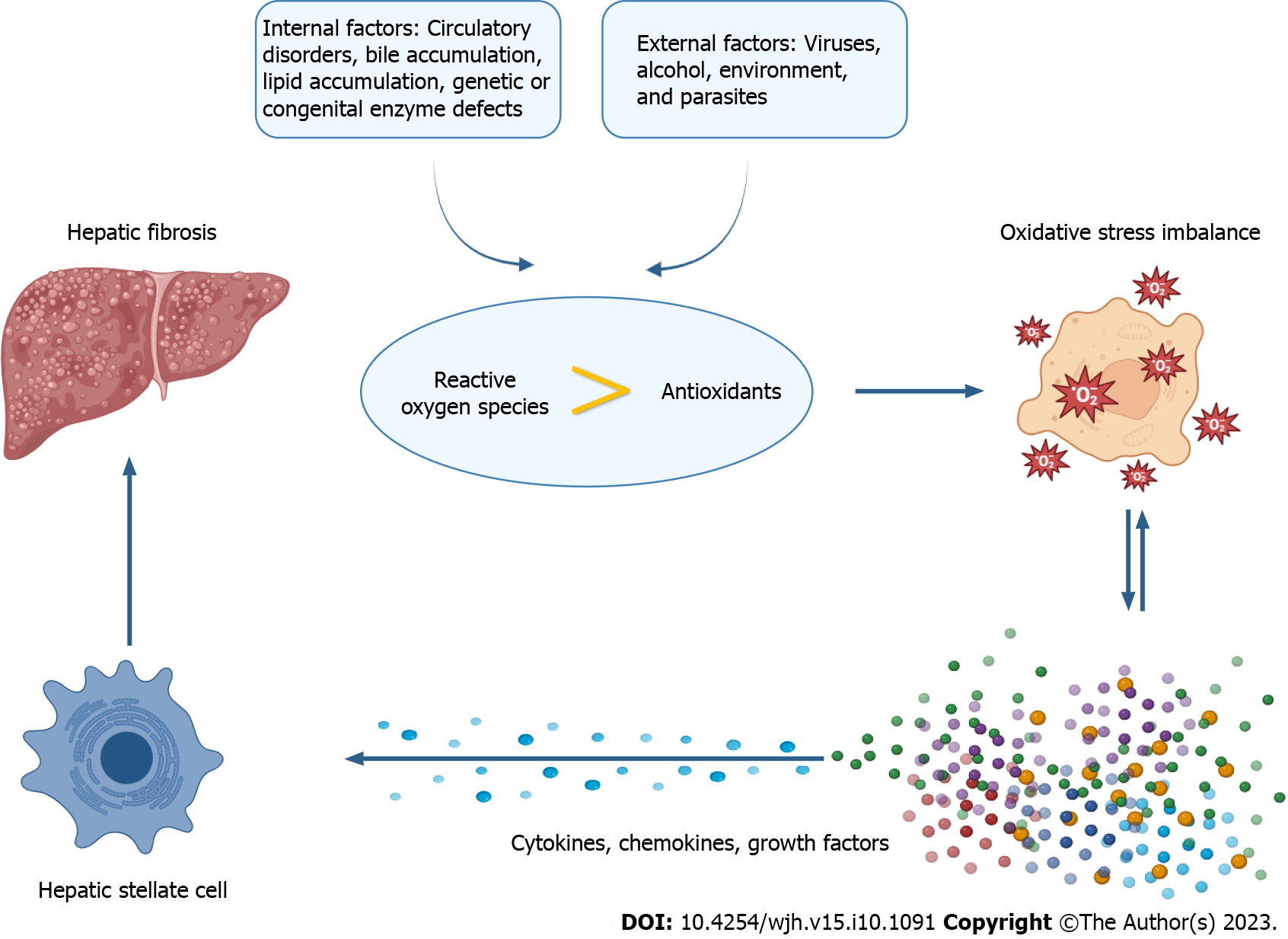Copyright
©The Author(s) 2023.
World J Hepatol. Oct 27, 2023; 15(10): 1091-1108
Published online Oct 27, 2023. doi: 10.4254/wjh.v15.i10.1091
Published online Oct 27, 2023. doi: 10.4254/wjh.v15.i10.1091
Figure 1 The mechanism of hepatic fibrosis.
Due to various factors such as alcohol abuse, viral hepatitis infection, genetic abnormalities, alcoholic fatty liver disease, autoimmune diseases, and medications, the body may produce an excessive amount of reactive oxygen species, leading to oxidative stress. At the same time, these factors may also induce cells to release cytokines, chemokines, growth factors, and apoptotic bodies, as well as activate hepatic stellate cells (HSC) and transform them into myofibroblasts. Consequently, large amounts of extracellular matrix (ECM) substances, such as collagen, non-fibrillar collagens, glycosaminoglycans, and proteoglycans, are autosecreted. The presence of these ECM substances can further stimulate the autosecretion of HSCs, ultimately resulting in fibrosis and impaired liver function.
Figure 2 The mechanism of oxidative stress-mediated hepatic fibrosis.
Circulatory disorders, bile accumulation, lipid accumulation, genetic or congenital enzyme defects, as well as factors such as viruses, alcohol, environment, and parasites, can all contribute to an imbalance between the production of reactive oxygen species and the body’s ability to remove them, resulting in oxidative stress. This imbalance can further stimulate the secretion of cytokines, chemokines, and growth factors, which in turn activate hepatic stellate cells and contribute to the development of hepatic fibrosis.
Figure 3 Treatment of hepatic fibrosis by oxidative stress mediated by traditional Chinese medicine.
Traditional Chinese medicine employs various mechanisms to reduce the production of reactive oxygen species in the body, thereby suppressing oxidative stress reactions. They can enhance the secretion of antioxidant enzymes such as superoxide dismutase, glutathione, and heme oxygenase 2, as well as increase the activity of interferon-γ and nuclear factor erythroid 2-related factor. Moreover, traditional Chinese medicine can inhibit the secretion of growth factors, cytokines, chemokines, macrophages, and neutrophils. They can also hinder the activation of quiescent hepatic stellate cells into myofibroblasts and facilitate the degradation of extracellular matrix components like collagen. These actions contribute to the protection of liver function and hepatocytes, ultimately mitigating and reversing hepatic fibrosis. ALP: Alkaline phosphatase; ALT: Alanine transaminase; AST: Aspartate aminotransferase; α-SMA: Alpha-smooth-muscle actin; IFN-γ: Interferon-γ; Nrf2: Nuclear factor erythroid 2-related factor.
- Citation: Li Z, Zhu JF, Ouyang H. Progress on traditional Chinese medicine in improving hepatic fibrosis through inhibiting oxidative stress. World J Hepatol 2023; 15(10): 1091-1108
- URL: https://www.wjgnet.com/1948-5182/full/v15/i10/1091.htm
- DOI: https://dx.doi.org/10.4254/wjh.v15.i10.1091











